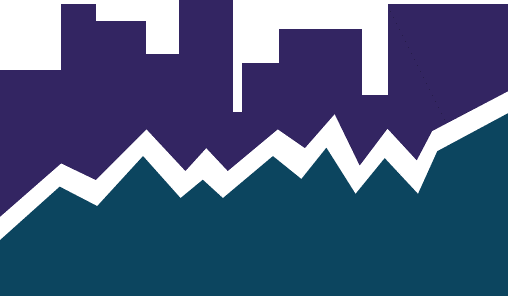The Monday Morning Quarterback
A quick analysis of important economic data released over the last week
By Elliot D. Pollack & Co. | Rose Law Group Reporter
Jerome Powell, the current Fed Chairman, appears to be a fan of Paul Volcker, the Fed Chairman in the early 1980s responsible for drastically increasing interest rates and sending the economy into recession to cure persistently high inflation. In his latest press conference after another 0.75% increase in interest rates, Mr. Powell reiterated time after time his commitment to the Fed mandate of 2% inflation and would continue to increase rates to the point that they are restrictive to growth for as long as inflation remained above the target. This means reduced economic activity and, eventually, job losses.
I thought it was interesting that Chairman Powell referred to a measure of inflation called Core PCE (currently at 4.6%) and also referenced the Summary of Economic Projections expecting policy to land the Fed Funds Rate at 4.6%. It’s just as we said, the Fed believes the solution to curbing inflation is for the Fed interest rate to match or exceed the level of inflation. The interesting part is that they reference the lowest reported measure of inflation as their guide. Based on the information and responses given at the press conference, it suggests a 0.75% increase in November and a 0.50% increase in December, perhaps pausing at that point to see how lagging data performs. That would achieve a Fed Funds Rate of 4.5% by the end of the year.
So, while the Fed states that they are committed to reaching 2% inflation, they have also set their sights on the least painful way to reach that goal. Current projections for this course of action would increase the unemployment rate from the current historic low of 3.7% up to 4.4% or about 1.2 million fewer jobs. That’s assuming inflation starts to fall from current and future rate hikes. Otherwise, the Fed has given every indication that they will keep tightening.
U.S. Snapshot:
- Leading indicators dropped for the sixth month in a row in August. The index has now fallen 2.7% in those six months. Only two out of the nine indicators have contributed positively in that same time period. Expectations have shifted and turned somber for the U.S. economy. All eyes are on employment, as it has remained defiant, but it is expected to slow in the coming months.
- Builder sentiment was down for the ninth consecutive month in September, according to the NAHB’s Housing Market Index. September’s level of 46 was the lowest since 2014 (excluding the COVID-19 shutdowns in 2020). Higher mortgage rates and prices are putting homeownership out of many households’ hands.
- Data from the U.S. Census New Residential Construction report was mixed in August. The number of starts increased by 12.2%. Single family starts increased 3.4% for the month. Total permitting activity was down 10% in August, as single family and multifamily both declined from July’s levels.
- According to NAR’s latest existing home sales figures, existing home sales had a small decline (0.4%) from July but were down 19.9% from a year earlier. After revisions to July’s preliminary numbers, the median sales price declined for the second consecutive month in August. The price for all existing houses is down 3.5% to $389,500.
Arizona Snapshot:
- The housing sector struggles across the nation were felt in the state’s major metro areas in August, according to RLBrownReports.com.
- Greater Phoenix saw declines from last year’s level for monthly existing home sales (-37.7%) and permits (-36.0%). New home sales saw an uptick, up 10.4% during the same period. Looking at 2022, the number of year-to-date resales is down 14.8% and permits are down 16.2% with new homes sold only down 1.6%. The median sales price for existing homes has declined for two consecutive months but remained 10% above last year’s level.
- Greater Tucson’s permit activity declined 6.9% bringing the YTD decline to 18.4%. Monthly resales were down 23% but are only down 8% for the year. New home sales were up 14.5% for the month and remained above last year’s YTD levels.
- The interest sensitivity of the market has forced many potential buyers to wait and see. The rise in the cost of living and the rise in interest rates has made the affordability issues in the state even more prominent.












